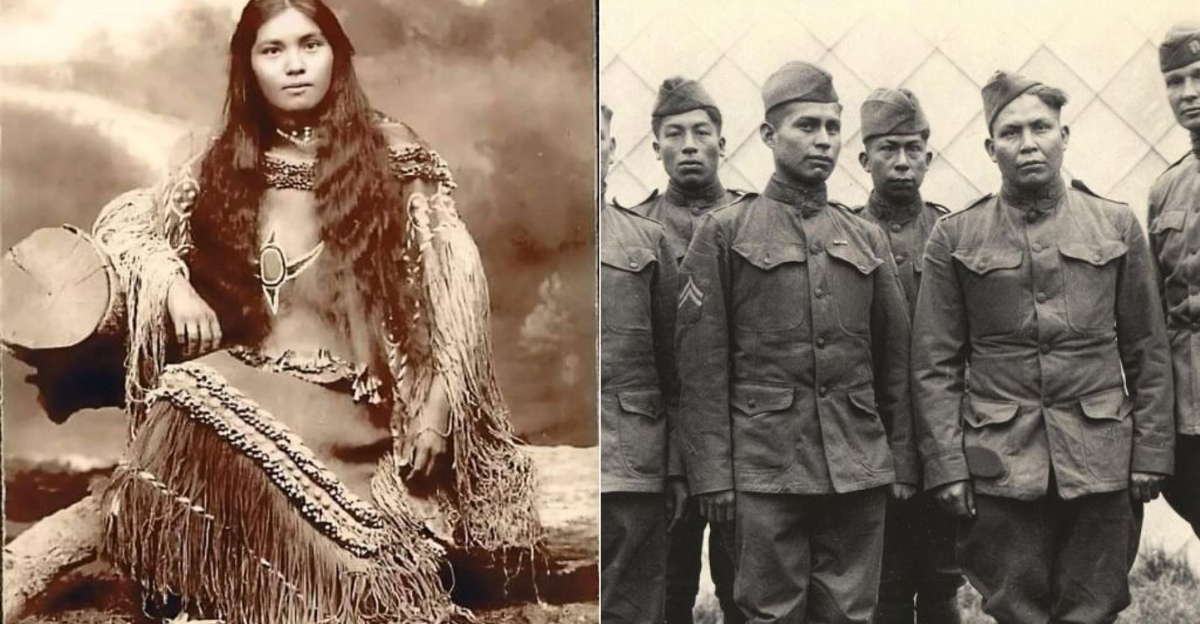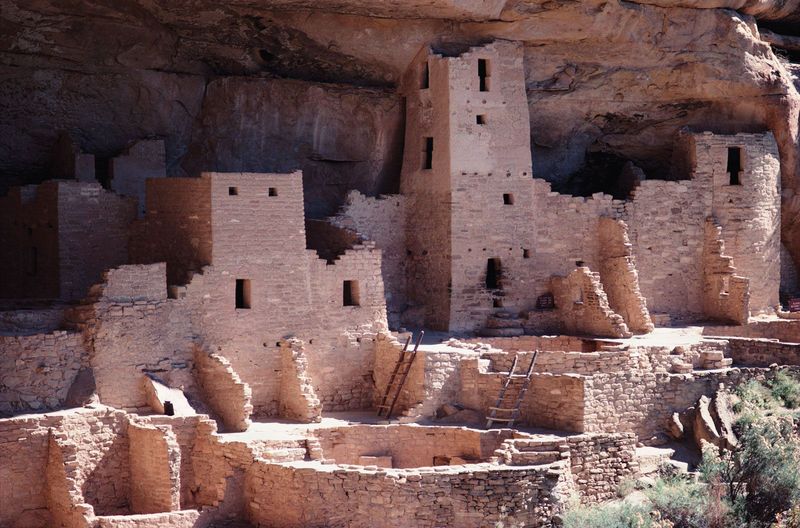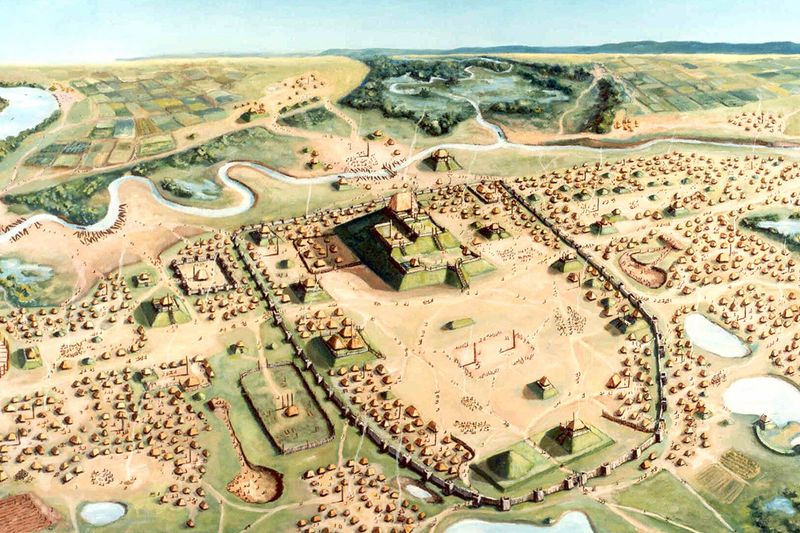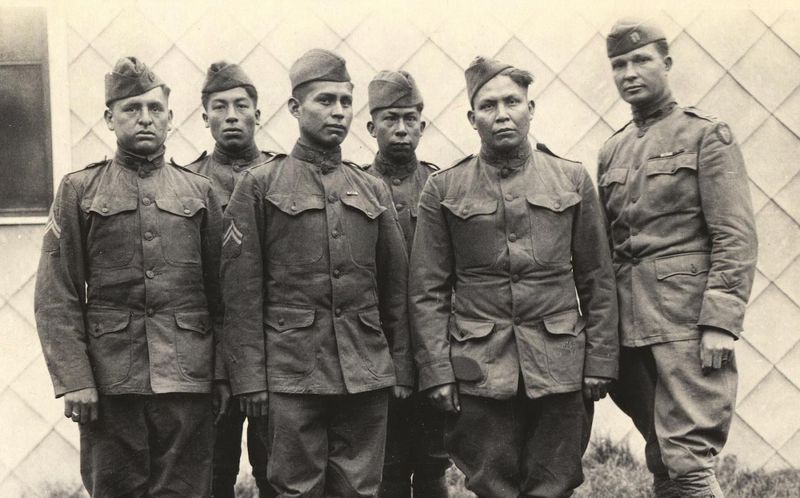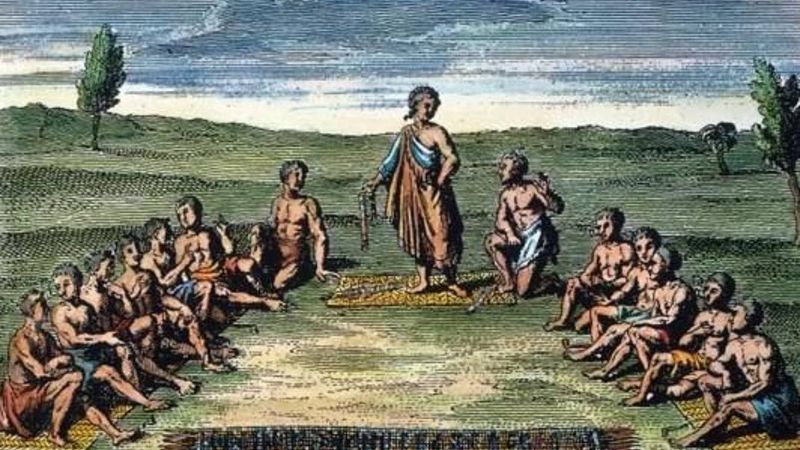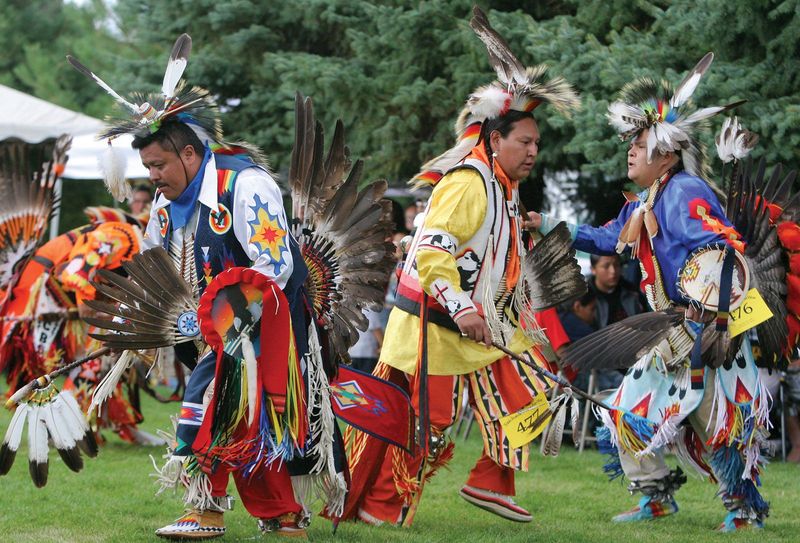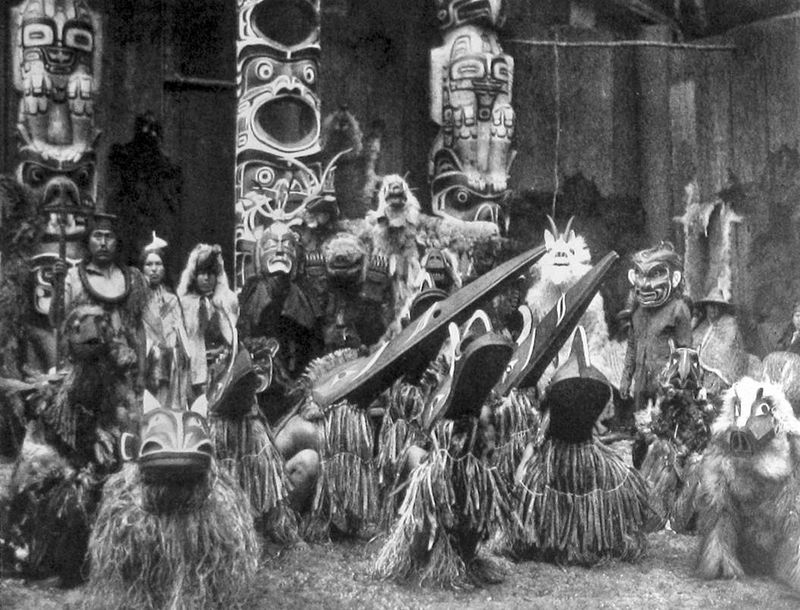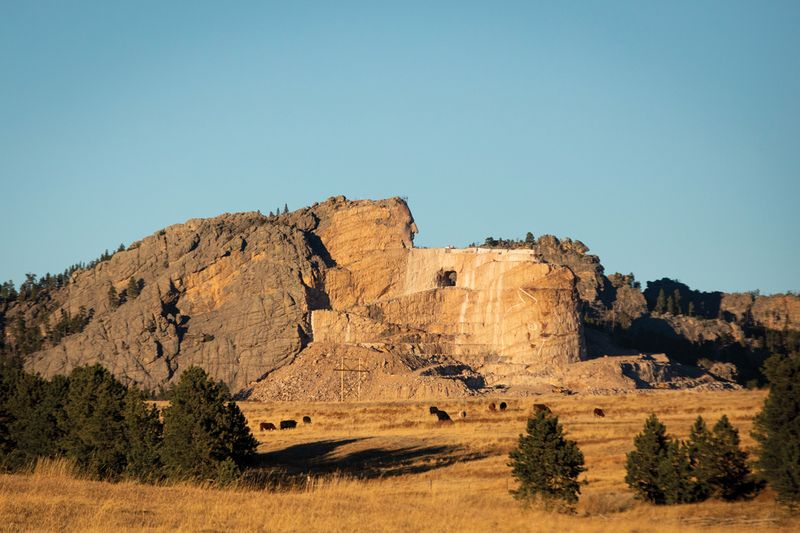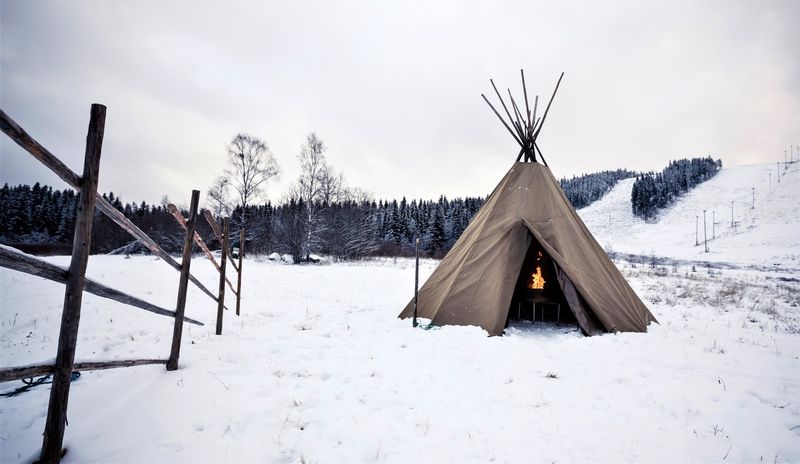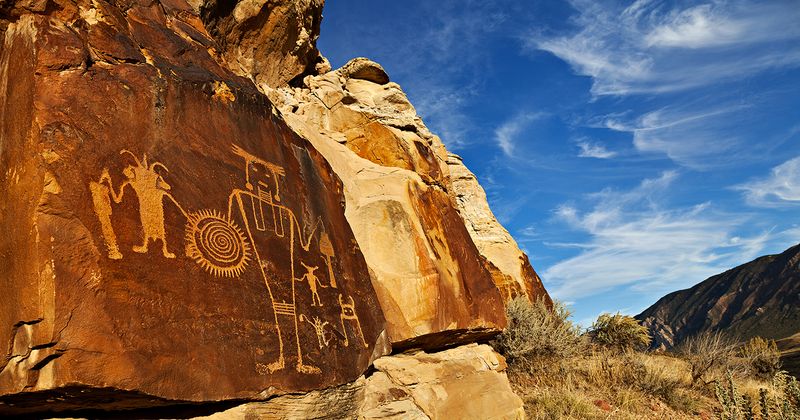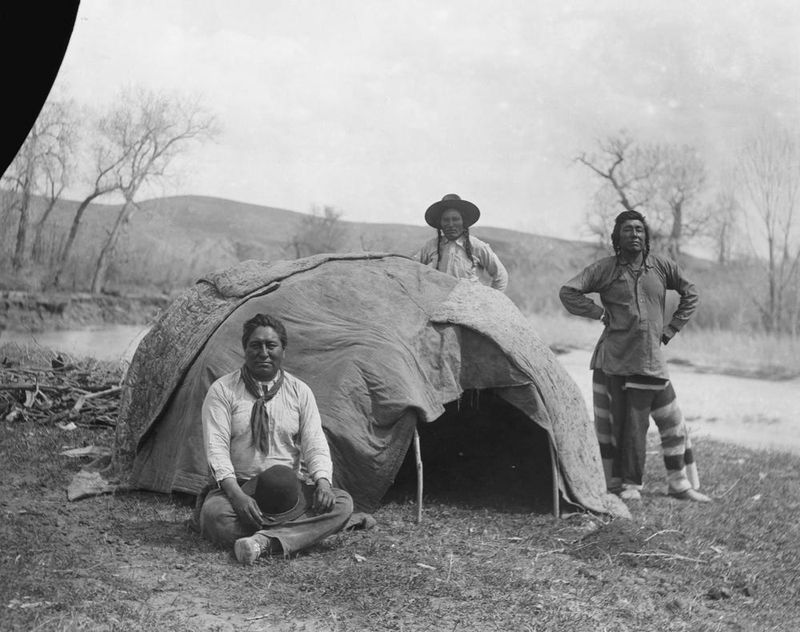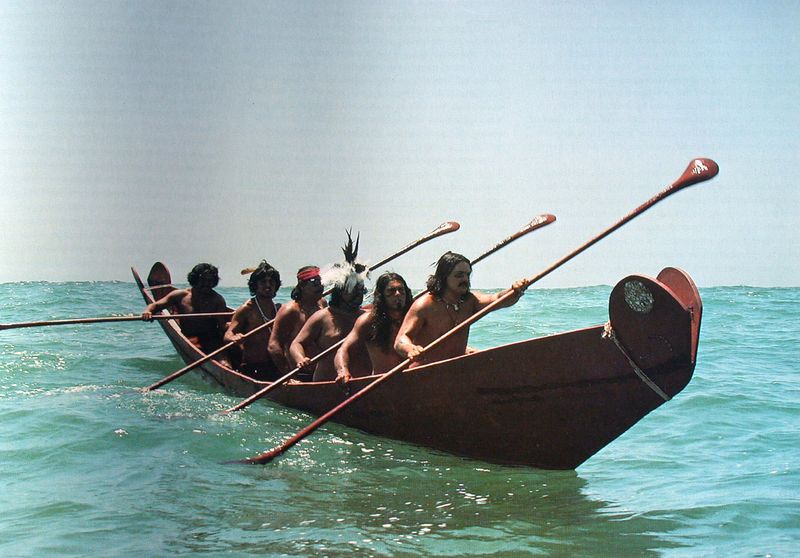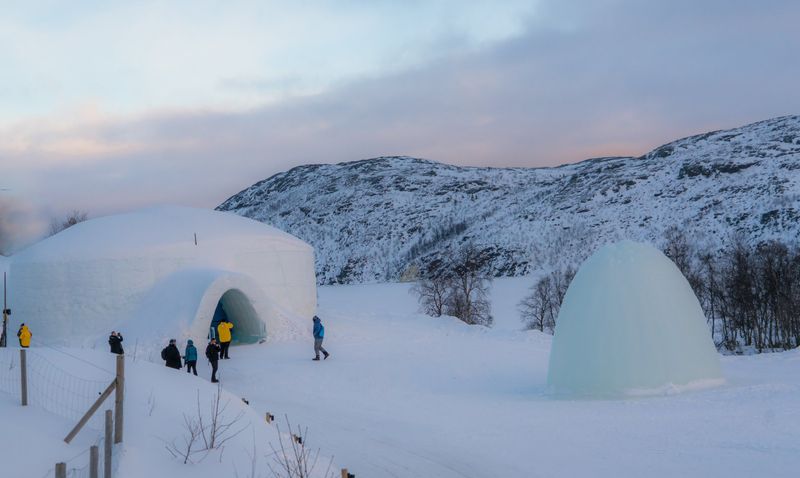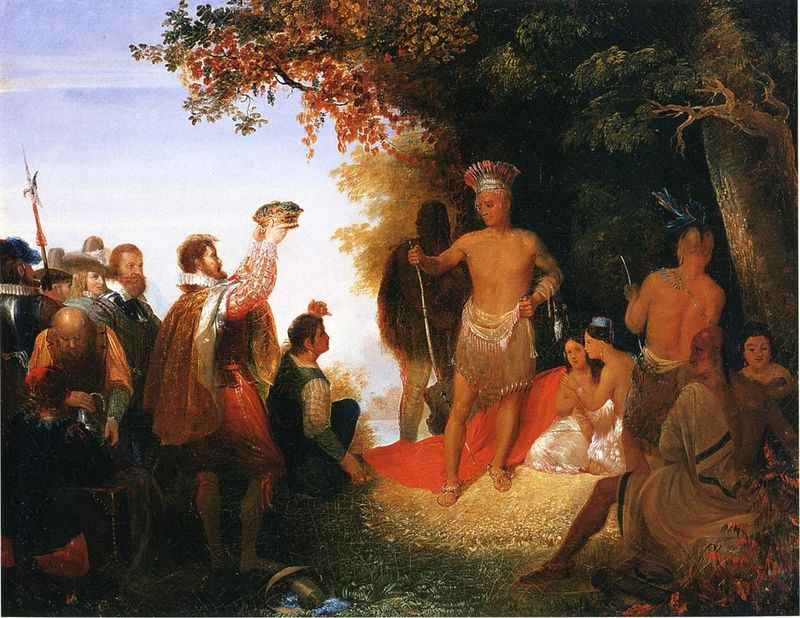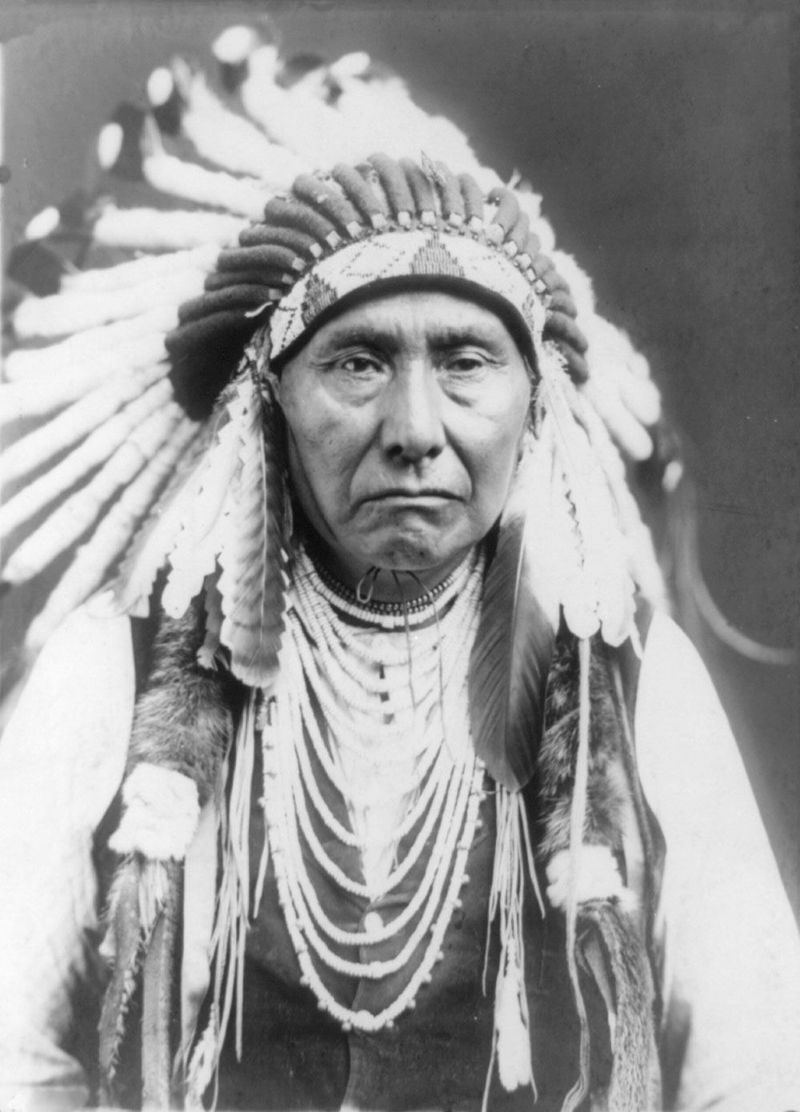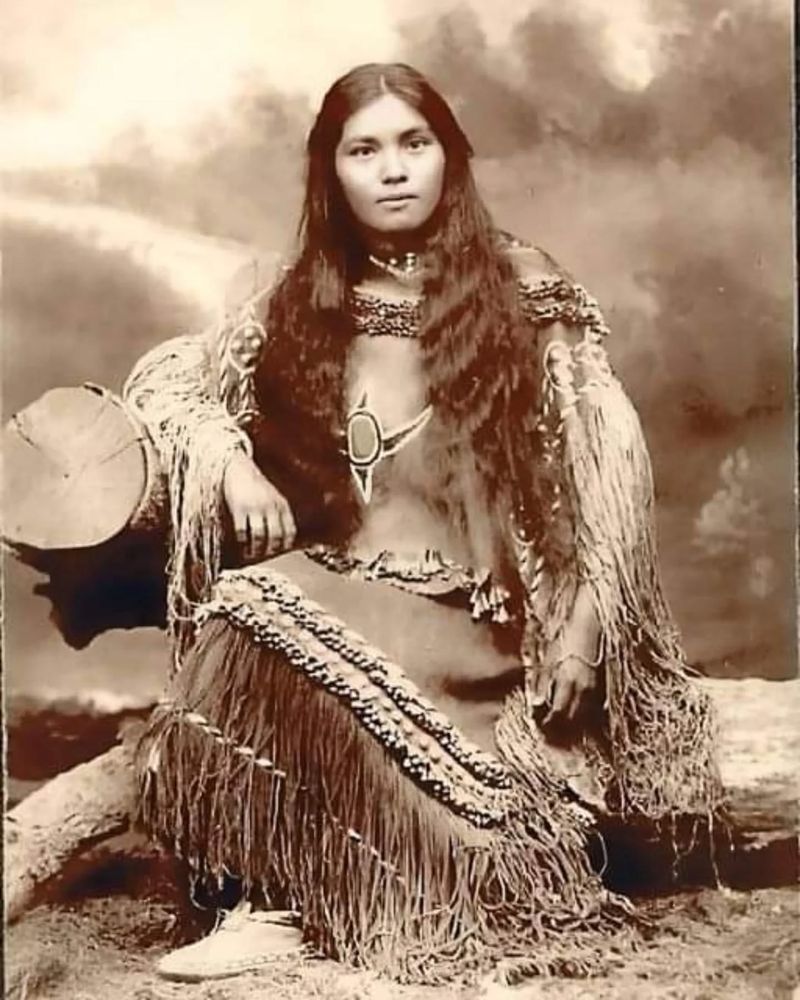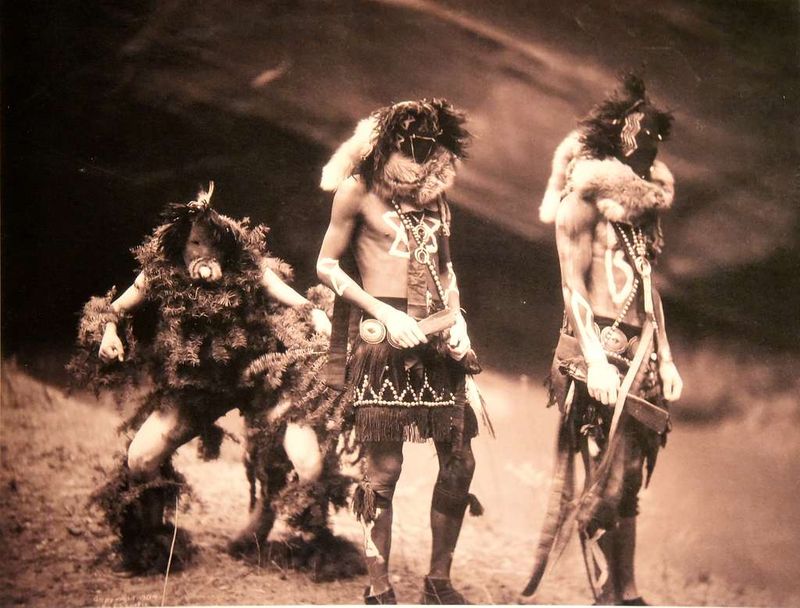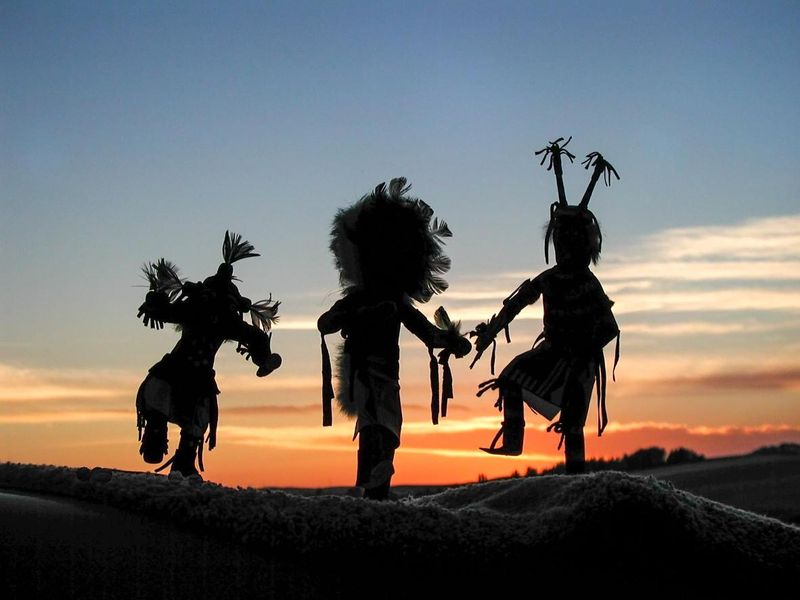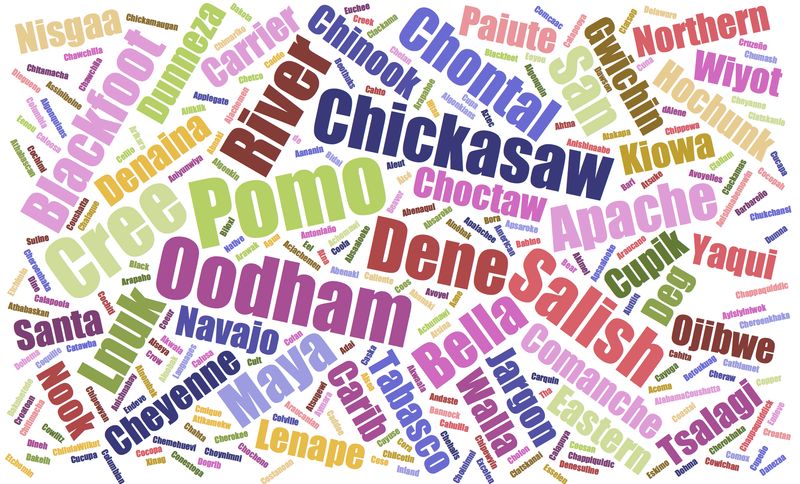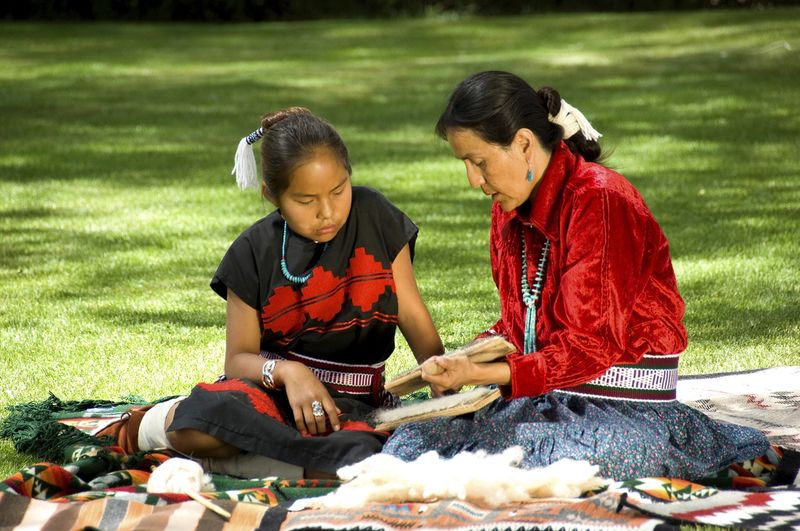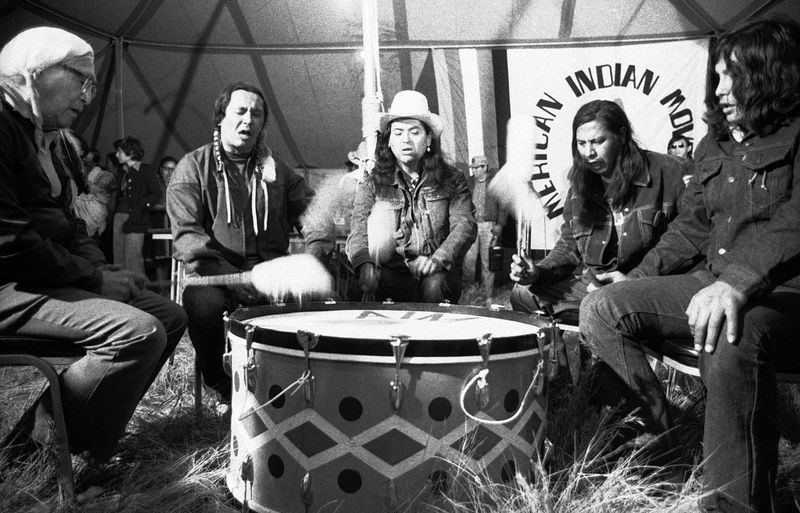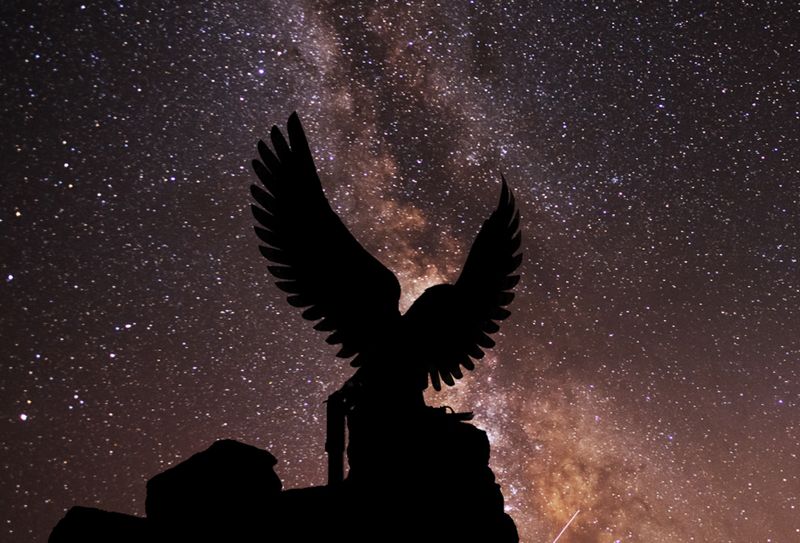Native American history is rich and diverse, filled with unique stories and profound impact on the development of the Americas.
From ancient civilizations to modern-day contributions, this history is integral to understanding the broader tapestry of human experience.
Join us as we explore 25 fascinating facts that shed light on the incredible cultures, achievements, and resilience of Native American peoples.
1. The Ancient Puebloans’ Architectural Genius
The Ancient Puebloans, known for their advanced architecture, thrived in the American Southwest. They constructed stunning cliff dwellings and multi-storied complexes, showcasing remarkable engineering skills.
These structures, built from sandstone, mud, and wood, provided shelter and protection.
Their ability to adapt to the arid environment is evident in their ingenious water conservation techniques. The Puebloans developed complex irrigation systems that sustained their agriculture.
Their legacy lives on through their descendants, who continue to cherish the traditions and stories passed down through generations, offering insight into a society that flourished for centuries.
2. The Mississippian Culture’s Mysterious Cahokia
Cahokia, the largest pre-Columbian settlement north of Mexico, was a thriving cultural center of the Mississippian people. Located near present-day St. Louis, it flourished around 1050-1350 AD.
The city boasted massive earthen mounds, some over 100 feet tall, serving ceremonial and political purposes. Its organized layout and sheer size hint at a complex society with social hierarchies.
Despite its significance, much about Cahokia remains unknown, as the city mysteriously declined before European contact. Archaeologists continue to uncover its secrets, offering a glimpse into the sophisticated life of its inhabitants.
3. The Navajo Code Talkers’ WWII Legacy
During World War II, the Navajo Code Talkers played a crucial role in secure communications. Using their native language, they developed an unbreakable code that baffled enemy forces.
Their contributions were vital in several key battles, including Iwo Jima, where their code ensured successful coordination without interception. Despite facing discrimination, these brave men served with honor and distinction.
After the war, their stories became more widely known, and they were finally recognized for their invaluable service, reminding us of the power of cultural diversity and innovation in times of conflict.
4. The Iroquois Confederacy’s Influence on Democracy
The Iroquois Confederacy, also known as the Haudenosaunee, was an alliance of several indigenous nations, including the Mohawk, Oneida, Onondaga, Cayuga, Seneca, and later, the Tuscarora.
Formed to maintain peace and order, it is one of the earliest examples of a participatory government, influencing the democratic ideals of the United States.
Their Great Law of Peace emphasized consensus and cooperation, principles that resonate in modern governance. The Confederacy’s lasting impact on political thought underscores the profound contributions of Native American governance systems to world history.
5. The Trail of Tears’ Harrowing Journey
The Trail of Tears refers to the forced relocation of thousands of Native Americans, including the Cherokee, Choctaw, and Muscogee (Creek) tribes, during the 1830s. Driven by the Indian Removal Act, they were compelled to leave their ancestral lands.
This brutal journey led to immense suffering and loss. Thousands perished due to disease, starvation, and exposure.
The Trail of Tears remains a poignant testament to the injustices faced by indigenous peoples and a crucial chapter in the narrative of American history that continues to resonate today.
6. The Resilience of the Seminole People
The Seminole people, known for their resilience, resisted removal efforts during the Seminole Wars in the 19th century. Unlike many other tribes, they were never entirely defeated or relocated.
Their knowledge of the Florida wetlands aided their resistance against U.S. forces. They adapted to the harsh environment, employing guerrilla tactics to defend their land and autonomy.
Today, the Seminole Tribe of Florida is a testament to indomitable spirit, thriving economically and culturally. Their history is a powerful reminder of the enduring strength of Native American communities in the face of adversity.
7. The Artistic Legacy of the Plains Tribes
The Plains tribes, including the Sioux, Cheyenne, and Comanche, are renowned for their vibrant artistic traditions. Their art reflects a deep connection to nature and spiritual beliefs.
Colorful beadwork, feathered headdresses, and detailed leatherwork are hallmarks of their craftsmanship, celebrating cultural identity and storytelling.
These artistic expressions continue to influence contemporary Native American art, preserving traditions while inspiring new generations.
Museums and galleries worldwide showcase the richness of Plains tribal art, highlighting its role in preserving history and fostering cultural pride.
8. The Potlatch Ceremony’s Cultural Significance
The Potlatch ceremony is a cornerstone of cultural expression among Pacific Northwest tribes, such as the Haida and Tlingit. These gatherings serve as social, economic, and political functions.
Through gift-giving, singing, and dancing, participants reaffirm social statuses, alliances, and spiritual beliefs. The ceremony is an integral part of life, celebrating important events like marriages, births, and funerals.
Despite historical bans by colonial authorities, the Potlatch has endured, symbolizing resilience and cultural continuity. Today, it remains a vibrant tradition, fostering community cohesion and preserving indigenous heritage.
9. The Ancestral Lands of the Lakota
The Lakota people hold deep spiritual connections to the Black Hills, an area they consider sacred. These lands, known as Paha Sapa, are central to their cultural identity and beliefs.
The Black Hills feature in Lakota creation myths and are sites of historical significance. Despite treaties recognizing their sovereignty, they were taken by the U.S. government, leading to ongoing legal battles.
Efforts to reclaim their rightful land continue, highlighting the importance of preserving cultural heritage and honoring treaty rights. The Lakota’s enduring relationship with the Black Hills is a testament to their resilience and spiritual strength.
10. The Ojibwe’s Winter Survival Skills
The Ojibwe people are renowned for their adeptness at surviving harsh winters. Their expertise in building snow shelters, known as quinzhees, showcases their resourcefulness.
These shelters provide warmth and protection, demonstrating traditional knowledge passed down through generations. The Ojibwe’s understanding of local flora and fauna also contributes to their winter survival, allowing them to hunt and gather effectively.
Their practices highlight the ingenuity of indigenous peoples in adapting to challenging environments, offering lessons in sustainability and conservation that remain relevant today.
11. The Ancient Petroglyphs of the Southwest
The Southwest is home to numerous ancient petroglyphs, etched into rocks by indigenous peoples thousands of years ago. These carvings are windows into their world, depicting animals, humans, and symbols.
They serve as historical records and spiritual expressions, offering insights into the beliefs and daily life of tribes such as the Anasazi and Hohokam.
Preservation efforts are crucial, as these petroglyphs are vulnerable to natural and human-induced damage. They are celebrated as cultural treasures, connecting generations and affirming the rich history that continues to inspire awe.
12. The Spiritual Significance of the Sweat Lodge
The sweat lodge is a sacred structure used in purification ceremonies by numerous Native American tribes. It symbolizes rebirth and spiritual cleansing.
Participants enter the lodge, where steam from heated stones creates a space for meditation, prayer, and reflection. This ritual fosters a connection to nature and community.
The sweat lodge remains a vital tradition, respecting indigenous spirituality and promoting holistic well-being. It offers a profound reminder of the importance of balance, health, and harmony in our lives, bridging ancient practices with contemporary needs.
13. The Chumash Maritime Culture
The Chumash people are celebrated for their maritime culture, particularly their use of tomols—plank-built canoes. These vessels enabled extensive trade and travel along the California coast.
Crafted with precision, tomols symbolize innovation and connection, highlighting the Chumash’s relationship with the ocean.
Their maritime expertise contributed significantly to their cultural and economic prosperity. The revival of tomol building and navigation today reinforces cultural pride and historical continuity, ensuring that the Chumash legacy endures in the modern era.
14. The Influence of Native American Agriculture
Native American agriculture has profoundly shaped modern farming practices. The “Three Sisters”—corn, beans, and squash—are a testament to indigenous agricultural expertise.
These crops complement each other, ensuring soil fertility and reducing pests, exemplifying sustainable farming methods. Native innovations in plant cultivation and soil management continue to influence contemporary agriculture.
Their legacy is evident in the variety of crops and agricultural techniques used worldwide, underscoring the enduring contributions of Native American farmers to global food security and agricultural diversity.
15. The Inuit’s Ingenious Igloo Construction
The Inuit are renowned for their ingenious construction of igloos, which serve as temporary winter shelters. These dome-shaped structures, made from compacted snow, provide warmth and insulation.
The design utilizes the insulating properties of snow, allowing for comfortable living in frigid climates. Building an igloo requires skill and understanding of snow conditions, highlighting the ingenuity of the Inuit people.
This traditional knowledge showcases the adaptability and resilience of indigenous cultures, offering insights into sustainable living practices that are relevant even in today’s modern world.
16. The Powhatan Confederacy’s Early Interactions with Colonists
The Powhatan Confederacy, a powerful alliance of tribes in the Virginia region, played a crucial role in early colonial history. Their initial interactions with English settlers at Jamestown were marked by both cooperation and conflict.
Led by Chief Powhatan, the Confederacy’s diplomacy and strategic alliances were vital in navigating the challenges posed by European encroachment.
These early encounters set the stage for complex relationships between Native Americans and colonists, influencing the history of the United States and reminding us of the importance of dialogue and mutual understanding.
17. The Nez Perce’s Historic Journey with Chief Joseph
The Nez Perce, led by Chief Joseph, embarked on a remarkable journey in 1877. Facing forced relocation, they traveled over 1,000 miles across rugged terrain in a bid for freedom.
Their strategic retreat, marked by battles and hardships, showcased their resilience and tactical skill. Chief Joseph’s leadership and eloquent speeches later drew national attention, highlighting the injustices faced by his people.
The Nez Perce’s journey remains a powerful symbol of resistance and the enduring struggle for Native American rights and sovereignty, inspiring generations with its legacy of courage.
18. The Timeless Craft of Navajo Weaving
Navajo weaving is a revered art form, symbolizing cultural identity and heritage. This craft, passed down through generations, produces intricately designed rugs and blankets.
Each piece tells a story, incorporating symbols and patterns that reflect Navajo beliefs and landscapes. The weaving process itself is a spiritual practice, fostering a connection to tradition and community.
Navajo textiles are celebrated worldwide, preserving a rich history while inspiring contemporary art. The timeless beauty and craftsmanship of Navajo weaving highlight the enduring cultural contributions of Native American artisans.
19. The Role of Native American Women in Society
Native American women have played vital roles in their societies, often holding positions of leadership and influence. Matrilineal systems, common among tribes like the Iroquois, highlight their central role in governance and social structure.
Their contributions extend to agriculture, art, and medicine, underscoring their integral role in community life. Despite historical challenges, Native women have persisted, preserving their cultures and advocating for rights.
Today, they continue to lead efforts in cultural revival and political advocacy, embodying resilience and strength in the face of adversity.
20. The Oral Traditions of the Apache
The Apache people are known for their rich oral traditions, which serve as the foundation of their cultural heritage. Storytelling is a vital practice, preserving history, values, and wisdom across generations.
These narratives encompass creation myths, moral lessons, and historical events, fostering a sense of identity and continuity. Elders play a crucial role in this tradition, ensuring that knowledge and customs endure.
In an era of digital communication, the oral traditions of the Apache remain a testament to the power of storytelling in maintaining cultural integrity and community bonds.
21. The Spiritual Ceremonies of the Hopi
The Hopi people are renowned for their intricate spiritual ceremonies, which are central to their cultural identity. These rituals, such as the Kachina dances, embody their beliefs and connection to nature.
Through dance, music, and symbolism, the Hopi honor their ancestral spirits and seek harmony with the universe. These ceremonies mark seasonal changes and life events, strengthening community ties.
The Hopi’s spiritual practices offer profound insights into human relationships with the natural world, reflecting a worldview centered on balance, respect, and sustainability.
22. The Impact of Native American Languages
Native American languages are a cornerstone of cultural identity and heritage. With over 500 distinct languages spoken historically, they reflect the diversity and richness of indigenous cultures.
Language preservation is crucial, as many are endangered due to historical suppression and assimilation policies. Efforts to revitalize these languages are underway, with communities implementing educational programs and digital resources.
Preserving Native languages is vital for maintaining cultural continuity and pride. It empowers younger generations to connect with their heritage, ensuring that these languages continue to thrive and enrich global diversity.
23. The Environmental Wisdom of Native American Practices
Native American practices are deeply rooted in environmental stewardship and sustainability. Traditional knowledge emphasizes harmony with nature, fostering practices that respect ecosystems and biodiversity.
Such wisdom includes sustainable hunting and gathering, controlled burning to manage landscapes, and agricultural techniques that enhance soil health. These practices offer valuable lessons for contemporary environmental challenges.
Embracing indigenous environmental wisdom can lead to more sustainable and equitable approaches to resource management, highlighting the importance of integrating traditional knowledge into global conservation efforts.
24. The Cultural Revitalization Movements
Cultural revitalization movements among Native American communities are thriving, focusing on restoring traditional practices and identity. These efforts encompass language revitalization, art, and ceremonies.
Driven by community leaders and youth, these movements strengthen cultural pride and resilience. They challenge historical erasure and promote a reawakening of indigenous knowledge and customs.
Through festivals, workshops, and educational programs, cultural revitalization fosters unity and empowerment, ensuring that Native American traditions flourish for future generations.
25. The Peculiar Tale of the Thunderbird and the Great Lakes
The Thunderbird is a legendary creature in Native American mythology. Said to reside around the Great Lakes, this majestic bird was believed to create thunder with the flapping of its wings and lightning from its beak.
It was considered a powerful guardian, protecting humans from evil spirits. Many tribes revered the Thunderbird, integrating its image into their art, totems, and stories.
This mythical being symbolizes strength and courage, embodying the awe-inspiring power of nature. It reminds us of the deep spiritual connection Native Americans have with the natural world, reflecting a profound respect for its mysteries.
